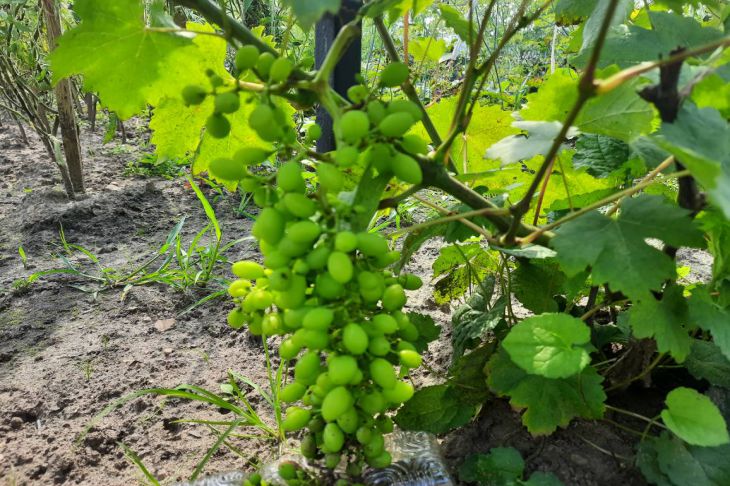Caring for grapes in April: step-by-step instructions for reviving a bush
In April, the grapevine life cycle enters a new phase. After winter hibernation, shoots begin to awaken.
It is the competent actions of the winegrower during this period that will largely determine the quality and quantity of the future harvest.
Spring pruning and preparing plants for active growth is the most important of the April viticultural work, says Anastasia Kovrizhnykh .
There are no trifles here, because every step directly affects the health of the vine, its productivity and the timing of fruiting.
Sanitary pruning and treatment with solution
The main task of the April "general cleaning" of grapes is to improve the health of the plantings. Removing damaged, dried and diseased shoots from the bushes gives impetus to the active growth of young, viable shoots and protects the plants from fungal diseases.

To minimize the likelihood of damage, pruning should be done in dry weather, with good ventilation of the area. Only weakened, frozen, bush-thickening vines, vertically directed and last year's sterile shoots should be cut.
The remaining stems must be treated with copper or iron sulfate to prevent and combat diseases.
It is necessary to form a compost heap from the removed parts of the bushes for rotting. It cannot be left in vineyards due to the risk of spreading infections. A proven method of soil disinfection is deep digging with lime.
Mulching and fertilizing
After sanitary treatment, you need to mulch the soil around the trunk with a layer of humus or compost.
Covering the soil with organic matter will help retain moisture and suppress weed growth. Under the mulch, the soil will warm up better and be saturated with oxygen.
The supply of mineral fertilizers for grapes for the entire growing season is laid down in April.
Plants are fed with potassium-phosphorus mixtures, wood ash, manure runoff and other organic additives are used.
Fertilizers should be applied one meter away from the trunk, evenly distributed and well embedded in the soil. Nitrogen should be given only in small doses so as not to provoke rapid growth of green mass.
Formation of bushes and covering of vines
In areas with difficult weather conditions (late frosts, strong winds) it is extremely important not to rush with the final removal of the cover from the vines. A temporary covering will protect against temperature changes and sunburn.
As the shoots grow, they are carefully brought out from under the canvas into the sun and formed in accordance with the chosen bush management system.
Most practices boil down to limiting the number of branches and leaving the most viable multi-eyed vines.
It will be possible to finish uncovering the plants and remove the cover only after the threat of returning cold weather has passed. The final touch is to tie and shoot the vines to the supporting trellis row.
Conclusion
April viticulture work is a large-scale effort to revive the plantings after winter.
By combining careful care and thoughtful agricultural practices at this stage, winegrowers make a decisive contribution to record-breaking harvests of high-quality crops by autumn. Attention to the smallest details will pay off in rich fruiting.
Earlier we wrote about the correct planting of spring garlic in the spring.
